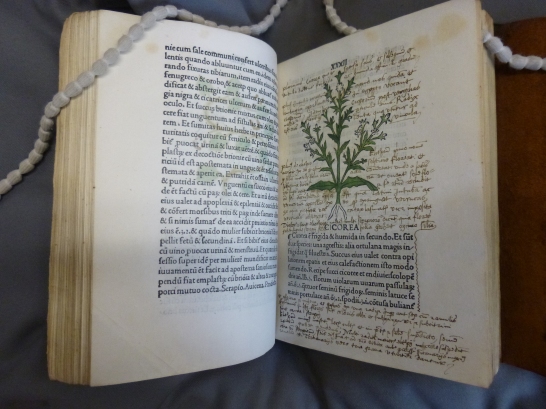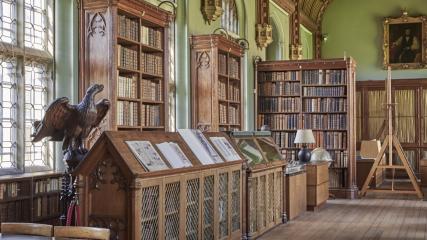Exploring the wonders of the Parker Library: My internship story
I am a year 10 student at Parkside Community College, and my year group must complete a week of work experience as we move into our final year of secondary school, to give us a taste of the world of work. A wide range of companies and organisations provide work experience, but the Parker Library was my choice because I was curious about the world of libraries, manuscripts and books. I have always enjoyed both English and History lessons at school, and the Parker really seemed to bring these together, and I thought that it might show me the practical ways in which the things we learn about in school or see in exhibitions and documentaries are researched and rediscovered.
That pretty much covers what I wanted to get out of my placement here, and I wasn’t disappointed. I have been given many opportunities to see how the library worked. I’ve seen the processing, cataloguing and paperwork, as well as the handling of both manuscripts and print books. Also, I’ve been able to see other parts of the process old texts go through, such as conservation, where I was shown the ways people repair, restore and protect the manuscripts.
The amount of work and care that goes into handling and maintaining these texts showed me how much history means to our culture and how important it is to preserve it for the future. I also realised how valuable they were to the people who made them. When I visited the conservation lab, I was shown how on some untrimmed vellum manuscripts and books it is possible to see the imprints of the spine, hips and shoulders of the animal that the skin once belonged to. This was amazing to see because it illustrates how much worth the very paper had for the people who wrote it. Dozens of sheep or cows were needed just to make the paper for one book, which was expensive and time-consuming, shedding a light on how important the author thought this particular piece of information was.
Something else I will do (I have not yet completed my placement) is visit Corpus Christi’s Taylor Library, which is for undergraduates. I think this will be a good experience, because it will show me how most libraries work. Even though term has broken up, so there are not any students to borrow books or study, I think it will be interesting to see how libraries are structured and the kind of work there is to do, as well as how this contrasts to other kinds of libraries like the Parker, which has a very different set up and purpose.
One of the things the Parker does is catalogue its books. So far, not all of them have been catalogued, because of the overwhelming number of them, and all the other things the Parker does. During my placement, there has been a cataloguer looking at books on botany, which was a great opportunity for me to see how new material is found and looked at. I was able to help find books and see if would be applicable to the subject.
 Something that is really fascinating about a number of the books, especially herbals and similar books about plants are the numerous coloured illustrations (like those in SP.196 left), which are absolutely breath-taking, and to my mind a bit more engaging than the blocks of dense Latin or Middle English. Some of the books which have not been opened often since their creation have vivid colours and the patterns and diagrams are still bright. However others, especially illustrated Bible pages, which would have been left open, are worn or discoloured. It is incredible to see how much effort people put into the margins, edges, and single letters.
Something that is really fascinating about a number of the books, especially herbals and similar books about plants are the numerous coloured illustrations (like those in SP.196 left), which are absolutely breath-taking, and to my mind a bit more engaging than the blocks of dense Latin or Middle English. Some of the books which have not been opened often since their creation have vivid colours and the patterns and diagrams are still bright. However others, especially illustrated Bible pages, which would have been left open, are worn or discoloured. It is incredible to see how much effort people put into the margins, edges, and single letters.
Overall, I have learnt a lot on my placement and feel really grateful to have had the opportunity to learn about books in history in a really hands-on way. Of course, I’ve only had a snippet of what the world of research and practical history is, but I’m definitely more fascinated by the work of archivists and librarians now.
By Hannah Volland

